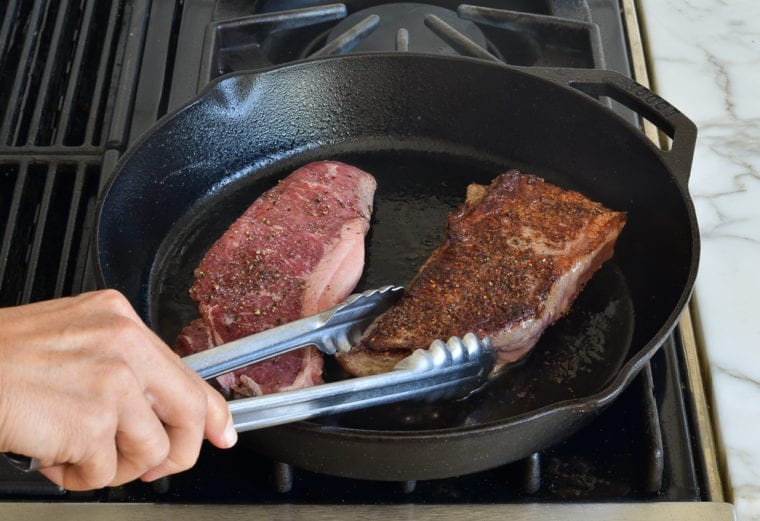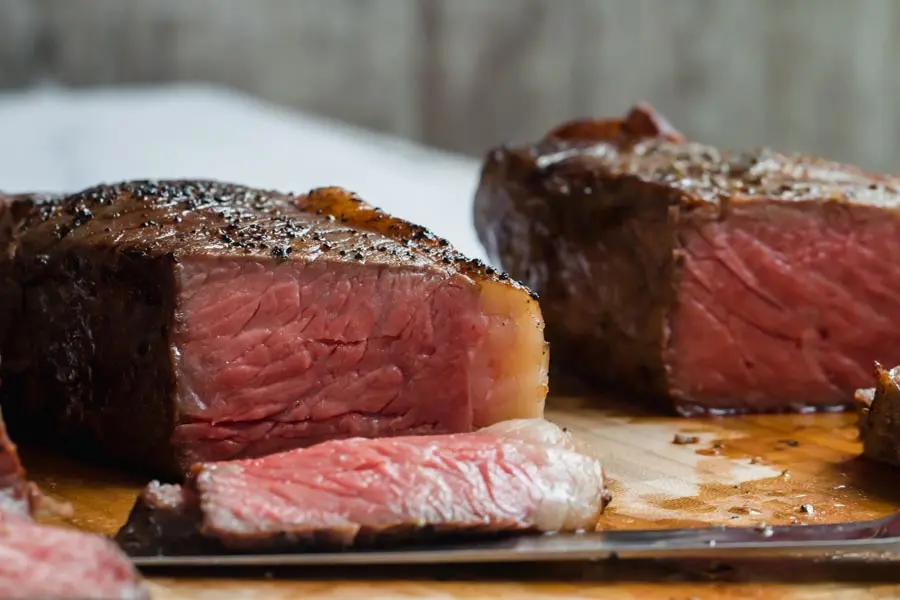Mastering the Art of How to Cook a Boneless Ribeye Steak: A Comprehensive Guide
Written By James Morgan
How to cook a boneless ribeye steak is a question that many culinary enthusiasts ask themselves. The ribeye, known for its rich marbling, tender texture, and robust flavor, is a favorite among steak lovers. If you are a cooking novice or an experienced chef looking to refine your skills in preparing this mouthwatering cut, youre in the right place. In this extensive guide, we will cover various aspects of cooking a boneless ribeye steak, from selecting the right cut to cooking techniques, seasonings, and serving suggestions.

Understanding the Boneless Ribeye Cut
The boneless ribeye steak comes from the rib section of a cow, specifically the rib primal, which is known for its excellent tenderness and flavor. This cut is characterized by its well-distributed fat and marbling, which melt during cooking and impart a rich taste and juicy texture. To prepare a boneless ribeye steak, it's essential to start with a high-quality cut from a reputable butcher. Look for steaks that are deep red in color with a good amount of marbling. The fat contributes significantly to the flavor and juiciness, making it essential for a delectable bite. Furthermore, choosing the right gradewhether Choice, Prime, or Selectwill influence the overall outcome of your cooking. This understanding will greatly assist you in learning how to cook a boneless ribeye steak successfully.

Essential Cookware for Cooking Boneless Ribeye Steak
To achieve a perfectly cooked boneless ribeye steak, having the right tools is crucial. Here are some essential cookware items you will need:
- Griddler - This versatile griddle allows you to cook steak with even heat distribution, creating a nice sear while retaining moisture.
- Knife - A sharp, high-quality knife is essential for slicing the ribeye after cooking. Proper slicing technique will make your steak easy to eat and more visually appealing.
- Cutting Board - A sturdy cutting board provides a safe surface for slicing your cooked steak without damaging your knife.

Ingredients for Cooking a Boneless Ribeye Steak
To make your ribeye steak a success, you'll find the following ingredients essential:
- 1 boneless ribeye steak (1 to 1.5 inches thick)
- Salt (preferably kosher or sea salt)
- Freshly ground black pepper
- 2 tablespoons of olive oil or melted butter
- Fresh herbs (like rosemary or thyme, optional)
- Garlic cloves (optional)

Preparing Your Boneless Ribeye Steak
Before cooking, its essential to prepare your boneless ribeye steak properly. First, remove the steak from the refrigerator and allow it to come to room temperature for about 30-60 minutes. This step ensures even cooking throughout the steak. While waiting, you can pat the steak dry with paper towels to remove excess moisture; a dry surface aids in achieving a perfect crust. Next, season the steak generously with salt and freshly ground black pepper. The seasoning enhances the steak's natural flavors and creates a delightful crust when seared.
Cooking Method: Searing and Grilling
Now, lets dive into the cooking process, which is where the steak magic happens! We will start by providing details on how to pan-sear your boneless ribeye steak in a griddler:
- Preheat the Griddler: Set the griddler to a high heat setting. Make sure its hot enough to sear the steak and create a beautiful crust, ideally around 450F in temperature.
- Add Oil: Add olive oil or melted butter to the hot griddler, allowing it to coat the surface evenly.
- Place the Steak on the Griddler: Gently lay the seasoned ribeye on the surface, ensuring theres enough space to avoid steaming.
- Sear the Steak: Let the steak sear undisturbed for around 4-6 minutes. Avoid flipping it prematurely; this aids in forming a delicious crust.
- Flip the Steak: Use tongs to flip the ribeye gently to the other side. Baste it with the melted butter or oil in the griddler for added moisture and flavor. Continue cooking for an additional 4-6 minutes or until it reaches your desired level of doneness.
For optimal doneness, use a meat thermometer to check the internal temperature. The ideal temperatures for ribeye steak are:
- Rare: 120F
- Medium-rare: 130F
- Medium: 140F
- Medium-well: 150F
- Well done: 160F or higher
Post-Cooking Techniques: Resting and Slicing
Once your boneless ribeye steak reaches the desired temperature, its crucial to allow it to rest for about 5-10 minutes. Resting the steak enables the juices to redistribute throughout, ensuring that your steak remains juicy and flavorful. Theres nothing worse than slicing into a steak right after cooking, only to see all the juices run out. To slice the steak, place it on your cutting board and use a sharp knife to cut against the grain; this method helps to enhance tenderness. Aim for slices that are about 1/2 inch thick to maintain the steak's nice texture.
Serving Suggestions
Now that your boneless ribeye steak is cooked to perfection, its time to think about serving. Presentation plays a key role in elevating the dining experience. Consider these serving suggestions to impress your guests:
- Plate the steak with a side of roasted vegetables such as asparagus, carrots, or Brussels sprouts for a balanced meal.
- Top the steak with a pat of herb butter, mixed with fresh garlic and herbs, adding richness and flavor.
- Serve with a side of creamy mashed potatoes or a fresh garden salad to delight the palate.
- Drizzle with balsamic reduction or chimichurri sauce for a gourmet touch.
- For wine lovers, pair your steak with a full-bodied red wine like Cabernet Sauvignon, which complements the flavors beautifully.
How to Clean and Maintain Your Cookware
To ensure the longevity and performance of your cookware, it's essential to maintain and clean them properly after preparing your boneless ribeye steak. Use a cookware cleaner that is safe for your griddler. Remember, its vital to avoid abrasive scrubbers as they can damage the surface. As for your cutting board, applying cutting board oil helps to keep the wood hydrated and prevents cracks. Regular maintenance not only prolongs the life of your tools but also ensures food safety during your cooking adventures.
As an Amazon Associate, I earn from qualifying purchases.



